What Was And What Remains Of Goldband Records
By Justin Morris
As was the case with many young men of the day, it was the petroleum industry that first brought young Eddie to Southwest Louisiana. Leaving his small hometown of Wrightsboro, Texas, he headed for the oil rich coast to pass his days and draw his wage as a dragline operator, starting in 1942.
Now for most, this would be the bulk of the story. But fortunately, that wasn’t the case for young Eddie. He had an unplanned and unexpected journey ahead of him whose influence and impact still resonate throughout sounds and rhythms that are Southwest Louisiana. This man was not your average Tom, Dick or Harry. He was Eddie … Eddie Schuler, that is.
It wasn’t long before Eddie found some creative ways to spend his off hours. He happened to befriend the members of the already iconic Hackberry Ramblers, who brought the young man on board and taught him a thing or two about making music.
It wasn’t long thereafter that Eddie started up an act of his own: The All-Star Reveliers. This experience allowed him not just the opportunity to perform, but it also gave him his first exposure to recording and producing music, which led to the birth of Goldband Records in 1945.
Originally designed solely to support Schuler’s band, Goldband eventually took on a new life after a streetside meeting in 1948 when Schuler was approached by a nearly blind man carrying a dingy bag who told Schuler that he was a musician and that he wanted to play on Schuler’s radio show. When asked what the man played, he produced a Cajun diatonic accordion — the first Schuler had ever seen.
Schuler put the young man on the show and almost started a new wave of Cajun music fans in Southwest Louisiana. When the young man started asking about recording a record, Schuler was initially unsure about the viability of Cajun music against the growing fiddle and western swing scene. But he agreed to record the man on the Goldband subsidiary Folk Star, and Schuler eventually loaded up the trunk of his car with fresh records and began peddling this Cajun record to record stores, jukebox rental companies and dancehalls across the state — introducing everyone to the music of Iry LeJeune.
Though LeJeune’s career was cut short after a roadside tragedy at the young age of 27, those records went on not only to establish its artist’s legacy as the true king of Cajun accordion music but also establish the legacy of its producer. Schuler took the momentum of those records and turned his small, essentially private, production company into a bona-fide record label based right here in our beloved Lake City.
By the mid ‘50s, Schuler was ready to set the world on fire after being introduced to another Lake Charles musician, Boozoo Chavis. The record the two created (also released on Folk Star) was a song called “Paper In My Shoe,” which sold 130,000 copies after its 1954 release. Its merger of the Cajun and “La La” styles of local music was one of the absolute earliest zydeco productions anyone had heard. It was the first zydeco hit and remained the biggest and best-selling one for over 30 years.
1959 would prove to be another critical year for the growing Church Street music shop. It was history in the making again when another travelling worker to the area brought Schuler a tape of his 13-year-old niece in Tennessee that he wanted Schuler to record. Schuler was apprehensive at first (largely due to the fact that country had fallen out of favor against the rising tide of the rock and roll era), but he agreed that if the girl could get over here, he’d put her on a record.
After 30-plus hours on a bus, a young Dolly Parton arrived. On Schuler’s Goldband label, she recorded “Puppy Love” — her first recording. The country legend has never forgotten those roots and stayed in touch with Schuler throughout the remainder of his life. She even looked back on the trip saying, “I don’t think I’ll ever forget the way the inside of that bus smelled. It was a combination of diesel fuel, Naugahyde and people who were going places.” Who knew just how far she’d go?
Later that year, Schuler worked with another local by the name of Phillip Batiste, who arrived with a song he’d penned by the name of “Sea of Love.” Schuler arranged and produced the recording for friend George Khoury’s small Khoury label. Just before its release, Batiste decided to take the stage name of Phil Phillips.
After massive airplay in Baton Rouge, the record drew the attention of Mercury Records, who leased the album for national distribution. It went to the top of the Billboard R&B chart and made it to No. 2 on the Top 100. It was the largest-selling record that Schuler or his studio had a hand in.
Through the ‘60s and ‘70s, many other well-known names graced Goldband discs: musicians such as Jo-El Sonnier, Freddy Fender, Mickey Gilley and many others spent some time down at “Eddie’s Music House” long before they were in the international spotlight.
The halcyon days would start to fade by the arrival of the ‘80s as musical tastes made yet another shift. But Eddie continued to keep the flames lit into the ‘90s with the studio, the on-site music store Eddie’s Music House, his on-site TV sales and repair business and his tenacious little record label that came to define the sound of a region and an era in a very special way.
But for many years, the old Goldband compound, if you will, stood quiet and still — almost a snapshot of the days and years gone by. In 1995, a large portion of the Goldband collection was acquired by the Southern Folklife Collection of the University of North Carolina at Chapel Hill.
But a great deal of product has remained, as if in stasis, since. Some artists have been allowed to go in and salvage their own pieces of musical history over the years, and a local collective has gathered another large portion of the collection as the first items for The Music Museum of Southwest Louisiana project.
It was, however, on the afternoon of Tuesday May 9, 2017, that the local Facebook feeds began to get all abuzz over the imminent demolition of the Goldband building and everything still remaining in those long-standing walls.
A local retired businessman, David Miles, was on a neighboring property and watched as the backhoe first ripped into the corner of the attic. When he saw records literally pouring out, he jumped on the phone to the contractor and asked if he could salvage anything before all the damage was done. He and another local, Michael Van Dyke, were able to gather up an impressive amount of this great collection, including a vast amount of unplayed records, cassettes, hats, financial paperwork — and even an autographed Goldband promo pic of Dolly Parton wishing Eddie well for his 84th birthday (which was quickly returned to Eddie’s family).
But by the time I arrived on Wednesday, the place, which had fallen into disrepair and suffered irreparable damage from Hurricane Rita, had been essentially reduced to rubble.
I’m sad to admit that having lived and grown up here, I somehow never knew where Goldband was located or even that the building was still standing. I only knew the stories. It wasn’t until The Music Museum of Southwest Louisiana project started gathering materials from there that I was made aware that the location still existed. It’s their efforts that brought me to this article.
I had no idea that the last physical semblance of a musical legacy that began 72 years ago was a matter of hours away from oblivion. So the efforts of these local musical archeologists are even more critical now that these veritable local artifacts have forever lost their original home.
There is a way you can help them save and preserve this and other important parts of the musical history of Southwest Louisiana. On Saturday, May 27, The Music Museum and Sloppy’s Downtown are hosting the first big fundraiser for the Museum project. The event is the kick-off of a partnership between the two, as Sloppy’s has offered space not only to house the Goldband Collection, but also space for a rotating exhibit for pieces from the collection while it’s housed there.
Museum board member Charles Lyons tells us that though he only joined the board in the last year, the organization dates back to 2003. It is committed to celebrating and promoting the music of Southwest Louisiana, both past and present, and educating the public on our region’s musical heritage.
For now, the priority is archiving, salvaging and preserving items like those of the Goldband collection. But the Museum will also display and exhibit artifacts of the various aspects of our area’s musical history: from The Hackberry Ramblers and Louderin Darbonne, to the proto-punk Pourquoi Pas downtown scene of the ‘90s and early ‘00s to what’s happening now musically and what is yet to come.
One of the most time-sensitive issues is interviewing and archiving the work of those early pioneers who are still with us or interviewing the families and contemporaries of those who have already died; that mission is the most immediate priority. The partnership with Sloppy’s will allow the Museum to focus on that work and continue those preservation efforts so that the collection can be safe and still viewed, enjoyed and appreciated by the people of Lake Charles and those who visit it.
The celebratory event will feature six hours of entertainment, starting with Platter Playlist’s Paul Dufrene playing a set in which he will be spinning original copies from the Goldband Archives. Following that, newly formed Née de Tradicion, featuring Lyons, Jeremy Boudreaux and Brandon Broussard (and possibly some special guests), will play a set of Iry Lejeune songs.
Thereafter, local singer-songwriter Brittany Pfantz will take the stage, to be followed by reggae/rock band Inner Gee. Kory Lambert and Friends will bring another singer-songwriter set before the event wraps up with Lyons’ own Sinners later that evening.
Sloppy’s will kick off the day with their Saturday Zydeco brunch featuring Step Rideau from 10 to 2; the Museum event will start around 6 pm.
Lyons says he hopes this is the first of many such events and he’s happy that the diverse “something for everybody” line-up is as reflective of Southwest Louisiana’s musical history as those from the archives and generations before.
Another treat for attendees will be the availability of some relics and souvenirs that will be for sale; these will include stickers, vanity license plate frames and other items. The proceeds and the $10 admission will all go to the Music Museum of Southwest Louisiana to help them continue the preservation efforts.
Being such a passionate fan of music and its cultural influences, I couldn’t help but be saddened as I stood in the pile of splintered wood and jagged vinyl that once was Goldband Records. But it almost felt a little symbolic. Not everyone was a fan of our boy Eddie, but I suppose the same could be true of any of us. What’s undeniable is the fact that the little record label that could … did. Not only did it do it, but it did some really big things and cast its own special light on this humble city in ways no one or nothing else ever did.
I want to extend a big thanks to David Miles and Michael Van Dyke for the generosity of their time and the photos (and maybe a souvenir or two) and also for their appreciation of the history that those crumbled walls once held; to Brice Perrin of Perrin Studios for providing some photos of the building from a recent shoot; and finally to the Music Museum of Southwest Louisiana for their diligence and commitment to preserving the special and vital piece of Lake Charles’ cultural history.
In ways I’ve never quite meant it before, I wholeheartedly look forward to seeing you at the show!



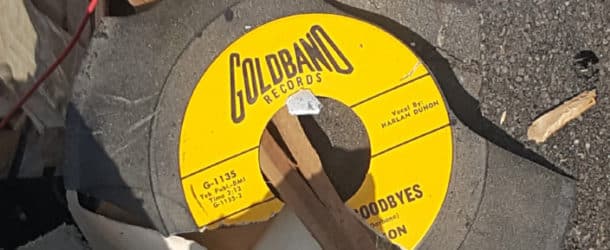

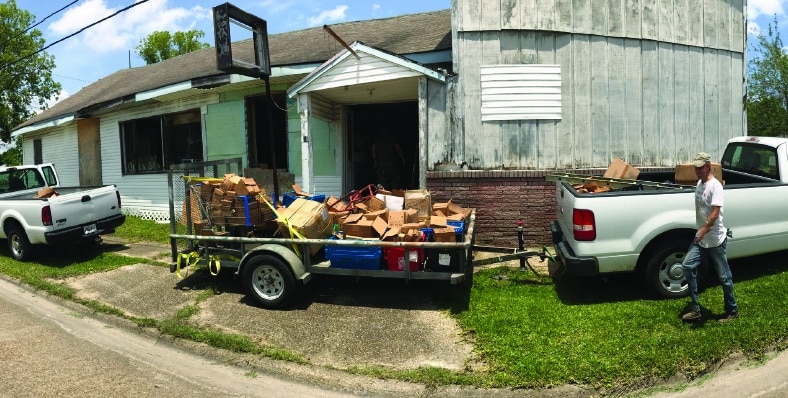
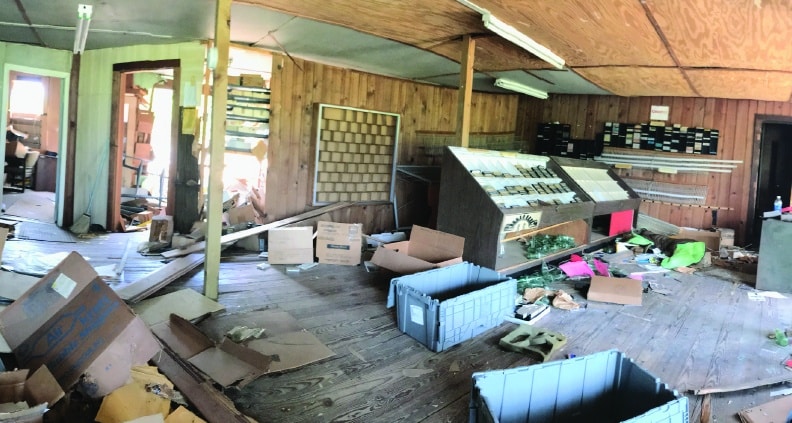
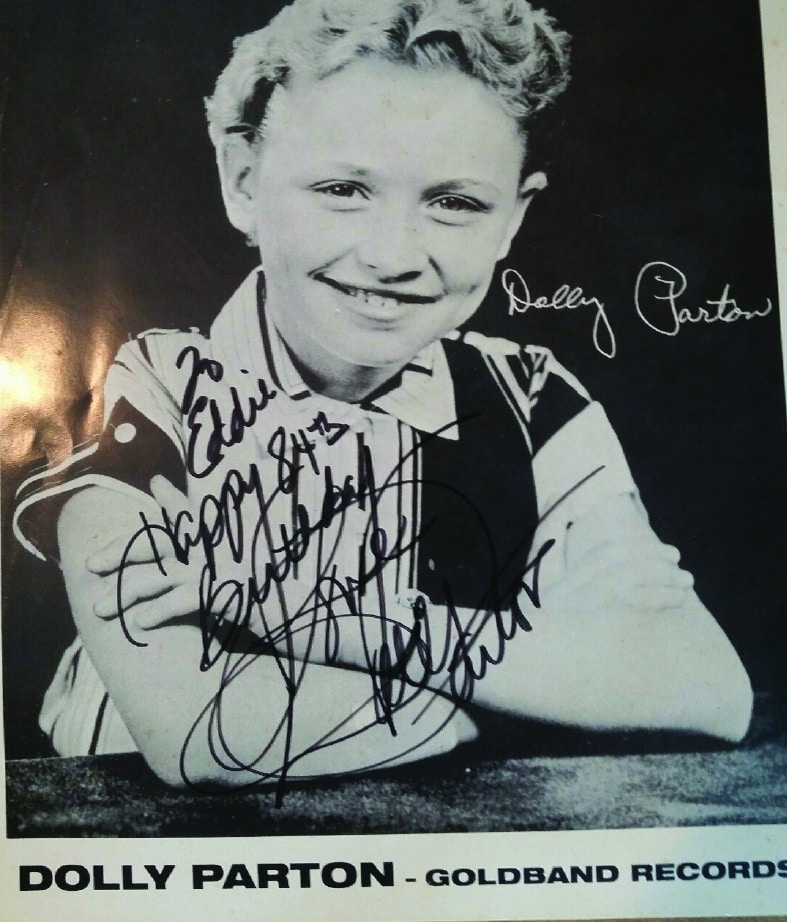
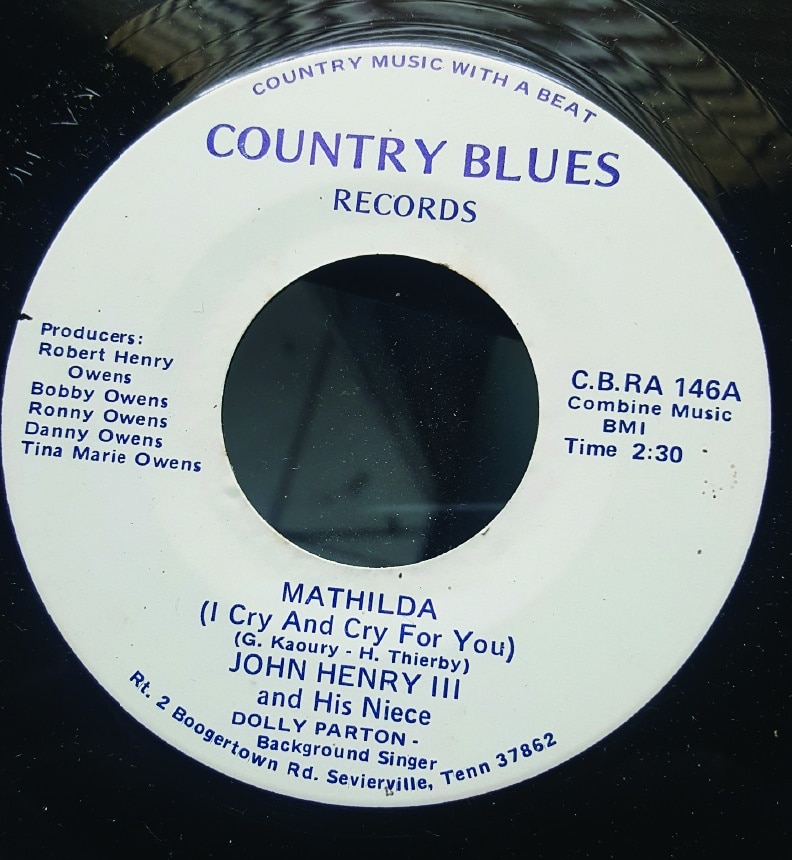

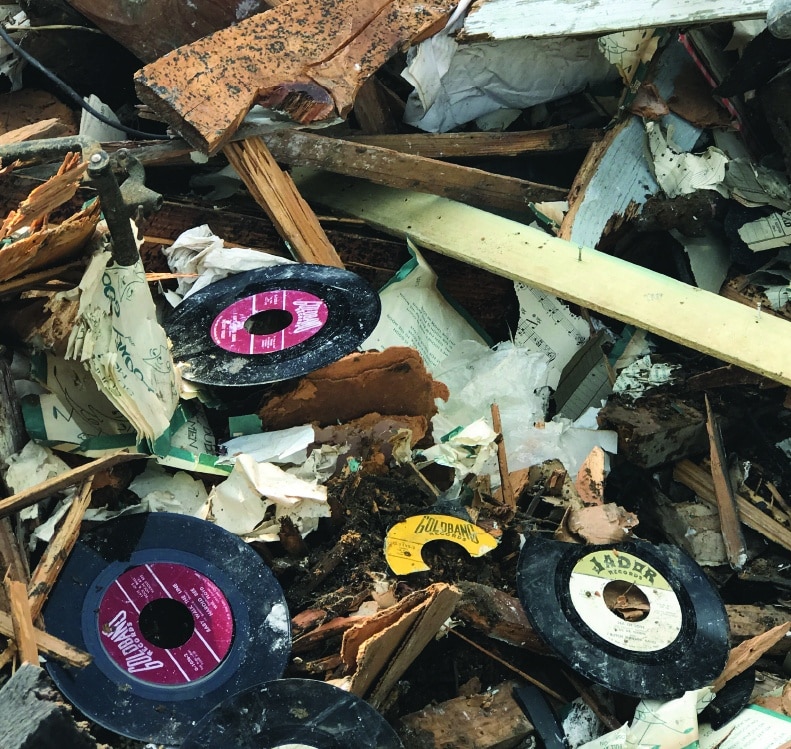











Comments are closed.